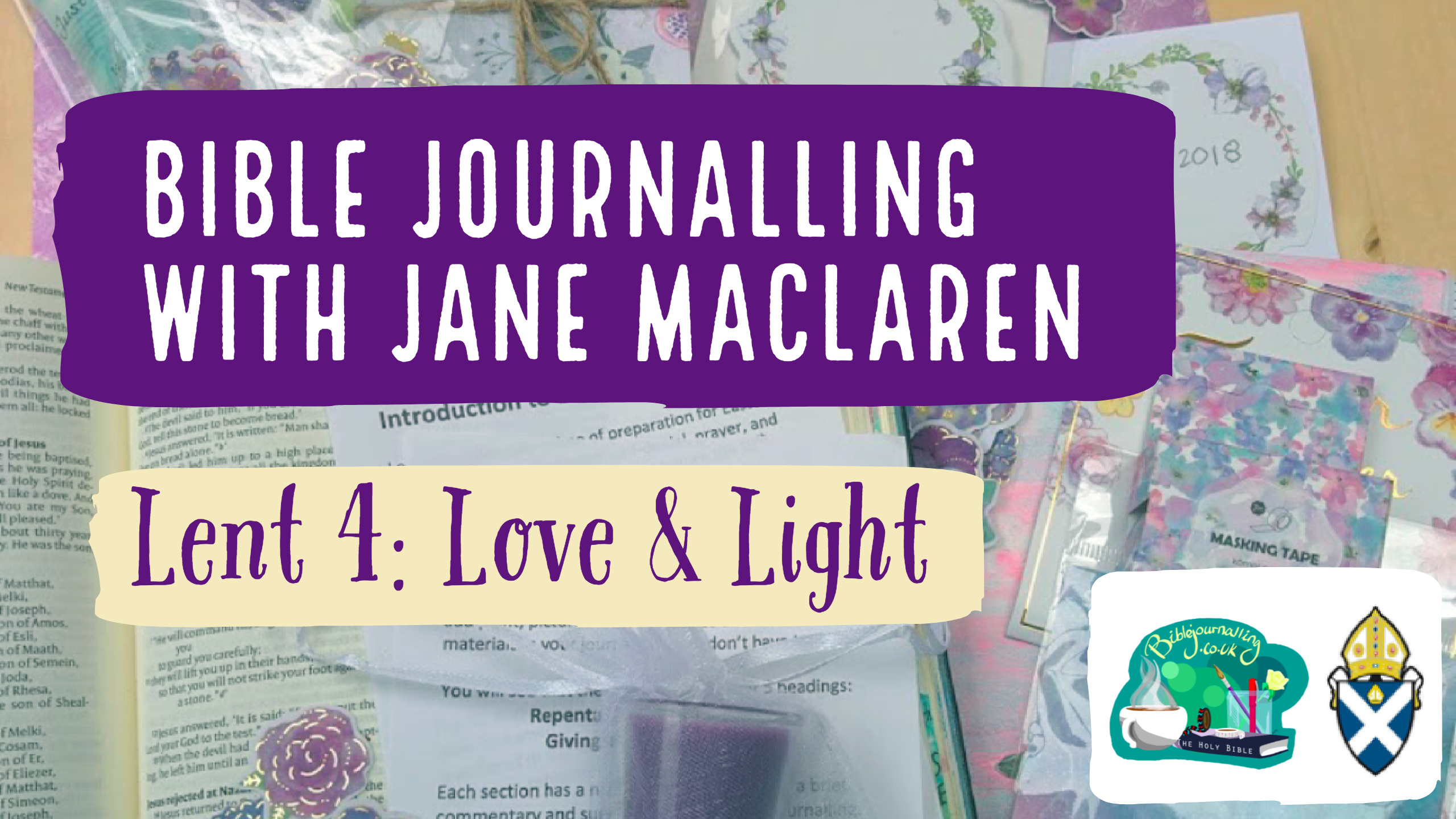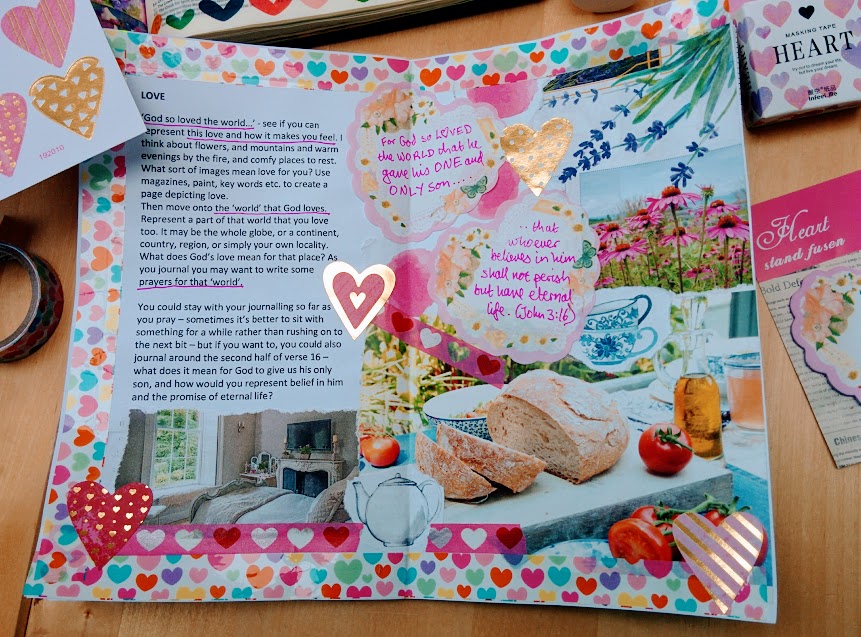
Welcome to week 4 of Lent. This week we are looking at the love and light found in Gospel reading from John 3:14-21. We’re working with Jane MacLaren to bring you an online Lent group, looking at the traditional Gospels through the format of Bible journalling. Jane is a non-stipendiary priest with a passion for helping people explore their relationship with God through this technique.
Follow along here, sign up for emails about the course and join our Facebook group to connect with others on the course from across the diocese. If you want a little more background on this course, along with a link to previous posts in the series, read the intro post here.

Bible Journalling Notes for the Fourth Sunday in Lent 2018: John 3:14-21
This week’s Gospel Reading is John 3:14-21.
John 3:16 was the first verse I learnt off by heart. I was about 7 in Sunday school and we were all set the task of learning the verse by the following week. I could glibly recite it by the end of day 1 – but it’s taken me more than 40 years to get near to absorbing the real meaning.
It’s closely followed by John 3:19, also beloved of Sunday school teachers: ‘Light has come into the world but people loved darkness instead of light because their deeds were evil’. As a child this conjured up for me the image of a beautiful sunrise, but beneath it a multitude of people dressed in black, bowed over, bent double almost, scurrying around with their eyes shaded from the intrusive glare of the light.
These two powerful images of love and light coming from God are our focus this week. You may want to dwell in these positive visions and stop with them for the week. Or you may want to move on to consider the contrast the passage gives us with the scurrying condemned who seem to prefer evil. Where and who are you in these pictures? Where are those in the world around you?
LOVE
‘God so loved the world…’ – see if you can represent this love and how it makes you feel. I think about flowers, and mountains and warm evenings by the fire, and comfy places to rest. What sort of images mean love for you? Use magazines, paint, key words etc. to create a page depicting love.
Then move onto the ‘world’ that God loves. Represent a part of that world that you love too. It may be the whole globe, or a continent, country, region, or simply your own locality. What does God’s love mean for that place? As you journal you may want to write some prayers for that ‘world’.
You could stay with your journalling so far as you pray – sometimes it’s better to sit with something for a while rather than rushing on to the next bit – but if you want to, you could also journal around the second half of verse 16 – what does it mean for God to give us his only son, and how would you represent belief in him and the promise of eternal life?
LIGHT
‘Light has come into the world…’ – the sun is out; you can feel its warmth. Represent this on your page and as you play with pictures, paint and glue, pray for the warmth to come over you and God’s light to shine on you and in you. You may want to think about places where you see or feel that light, and the effect it has.
You may want to pray for people or places that need that light, and represent them in your journal too. There is lots more material in this passage. If you have more time, you may want to explore the background story of Jesus and Nicodemus, and the concepts of being born again, resurrection and eternal life.
Get the printer-friendly version of the notes here.
Focus on Technique
4. Using sticky notes for key verses
Sticky notes come in all shapes and sizes. Increasingly you can get them with lovely borders or background patterns. They are very useful in journalling as spots on which to write prominent thoughts and ideas. I often use them as a stand-out place to write key verses. In a passage like this where there is so much material, I tend to focus on one or two phrases for the initial journalling. Writing them on sticky notes enables me to keep them as my focus, while I’m being creative, and then to try out different positions for these key points on the page.
Here’s a quick video with some ideas of how to use sticky notes in your pages.
(Note from the editor: I’ll be compiling a list of all the techniques used at the end of this course, in the meantime, just look back at the previous posts in the series for a new technique each week.)
